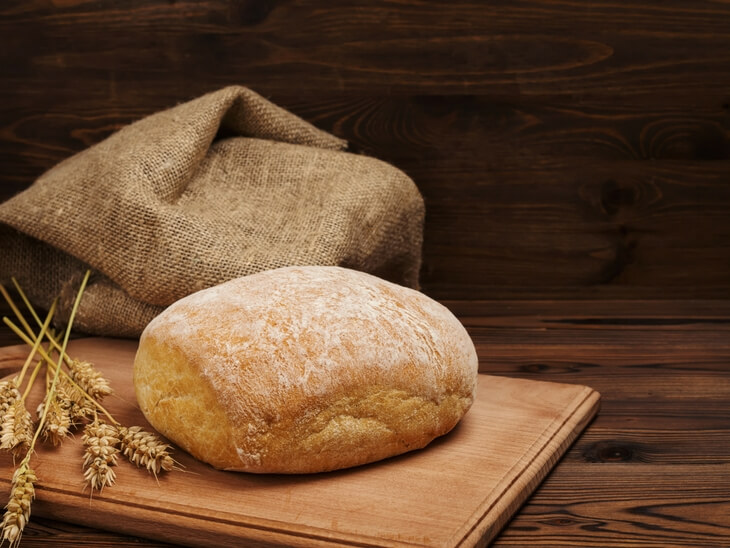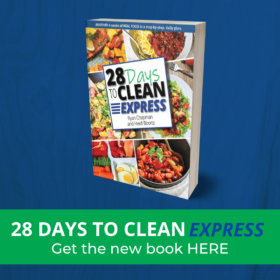Normally I don’t bother with homemade breads that require a starter, but for this recipe I made an exception. These whole wheat ciabatta rolls were so so so good! And there are a lot of steps, but none of the steps are difficult, so don’t be intimidated. Just make sure you note you need at least 12 hours to let the starter sit before making this bread. Ciabatta means “Italian Slipper Bread” but these look more like pillows than slippers. Not really sure what relevance that has here, though. It could be the 4th cup of coffee talking.
I originally made these along with this roast beef recipe. This recipe was adapted from epicurious.com.

Ingredients
Sponge
- 1/8 tsp active dry yeast
- 2 Tbsp water warmed
- 1/3 cup water room temperature
- 1 cup 100% whole wheat flour
Bread
- 1/2 tsp active dry yeast
- 2 Tbsp milk warmed
- 2/3 cup water room temperature
- 1 Tbsp extra virgin olive oil
- 2 cups 100% whole wheat flour
- 1 1/2 tsp salt
Instructions
Sponge
- Combine 1/8 tsp yeast and warm water. Let stand 5 minutes. Stir in room temperature water and flour. Stir well. Mixture will form a small dough ball. Cover bowl with plastic wrap and let stand at room temperature for at least 12 hours or up to 1 day.
Bread
- Combine 1/2 tsp yeast and warm milk. Let stand 5 minutes. Add milk mixture, sponge, room temperature water, olive oil and flour to a stand mixer fitted with a dough hook. Stir until flour is moistened. Turn speed to 3 and let mix 2 minutes. Add salt and mix on speed 3 1 more minute.
- Preheat oven to 425. (If you have a baking stone, add it to the oven at this stage.) Line a baking sheet with parchment paper.
- Add dough to oiled bowl and cover loosely with plastic wrap. Place in a warm, draft free place for 45 minutes.
- Divide dough into fourths. Form flattish round with each portion of dough. Place on baking sheet and flatten with palm of hand.
- Bake at 425 for 12-15 minutes or until rolls are light brown and sound hollow when tapped. Let cool before slicing.



Comments (16)
you forgot to include that the yeast needs to be activated with sugar, and most bread recipes have a second rise. I am not sure if this was an oversite, but the recipe as is doesn’t work
I’m sorry you had trouble with the recipe. I don’t activate yeast with sugar (sugar is red tier in 9010 nutrition) because it’s not necessary with instant yeast or active dry yeast. (The same way a bread machine doesn’t proof the yeast, neither do I.) If you prefer a double rise, please feel free to utilize one. I don’t use a second rise for this recipe and it works for me. I appreciate you taking the time to comment. Best, Heidi
Awesome recipe! I look forward to making it. Do you think I could use coconut or cashew milk instead?
Hi Dani!
I’ve never tried it with non-dairy milk, but I don’t know why it wouldn’t work. Enjoy!
Heidi
The dough was very sticky. I had to add flour as I was shaping the rolls. I made eight smaller instead of the larger four. They turned out nicely and tasted good too!
Amazing, tastes great!!
Why do you leave the sponge out for a whole day? Wouldn’t it be bad the next day? Amateur baker here.
Hi Kristin! What we’re doing with the sponge is basically making our own yeast. We take a tiny bit of commercial yeast and activate it with water, and then stir in some flour and water, and then we wait for nature to do its thing! The yeast will feed and grow and reproduce. So, no, it won’t go bad in a day, but it will get very populated with yeast, which is what we want. Sourdoughs and other breads that use starters and sponges are definitely interesting, and worth learning. And easy once you get the hang of it!
This is sooo delicious and so happy there is no need for sugar. It was a challenge for me to let the nature do it its thing over night and mix it with my own hands since I dont have a stand mixer. But very grateful nonetheless. Thank you for the recipe, Heidi! The easiest and the best so far for me and my family.
So if you have a baking stone, do you bake the rolls on that, or still do it on the baking sheet but have the stone in the oven?
Either way! The stone by itself would work great, but so would the baking sheet on the stone. So, your choice.
I bake with hard red winter wheat all the time, so this will be first time making ciabatta rolls.
Thanks for formula. I’m a chemist so I use formula all the time. Old habits hard to break.
I’ll keep you informed as to the result.
Hi Heidi! Thanks for being brave and doing 100% whole wheat ciabatta for us- I’m a huge fan! I used Montana 100% whole white wheat. The rolls came out tasty, buuuuut they didn’t have a crumb like a typical white Ciabatta. I know one of your goals is simplicity (which is so nice) but I was wondering if I added more rises with the “stretch and fold” method I’m seeing on other Ciabatta recipes, if that will take the crumb level up. What do you think? I’m not a bread expert and I’d love your thoughts. Thanks in advance.
Hi Kandyce! Thank you so much for taking the time to contact us! I absolutely encourage you to experiment with different techniques here. As you may know, using 100% whole wheat flour is going to yield a different product than a white or bread flour. Adding more rises is a great idea. I hope you try it out and let us know! -Heidi
I accidentally left my sponge for an extra day is this dough now bad and have to restart or will it be ok an extra day
Hi Dwayne! Thank you for taking the time to contact us! You can leave your sponge in the fridge for as long as 48 hours. Hope this helps! Heidi